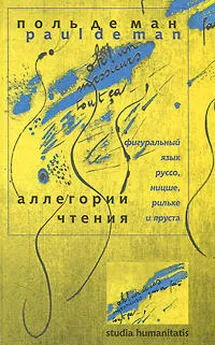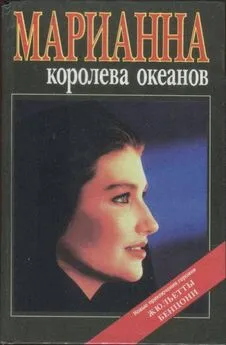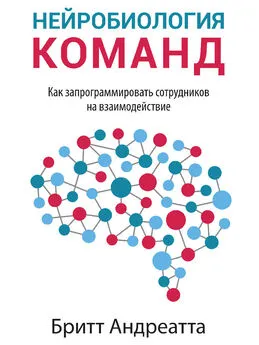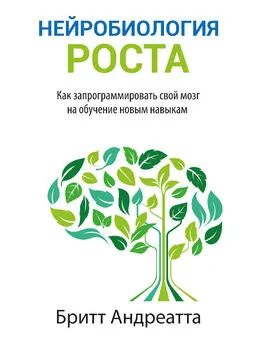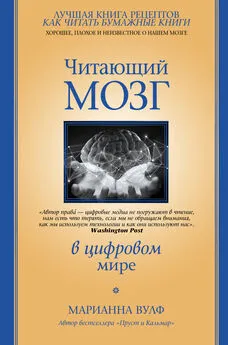Марианна Вулф - Пруст и кальмар. Нейробиология чтения
- Название:Пруст и кальмар. Нейробиология чтения
- Автор:
- Жанр:
- Издательство:ООО «Издательская Группа «Азбука-Аттикус»
- Год:2020
- Город:Москва
- ISBN:978-5-389-18966-9
- Рейтинг:
- Избранное:Добавить в избранное
-
Отзывы:
-
Ваша оценка:
Марианна Вулф - Пруст и кальмар. Нейробиология чтения краткое содержание
В этой книге, мгновенно завоевавшей мировую известность, видный американский нейробиолог Марианна Вулф исследует, как «открытая архитектура», пластичность нашего мозга помогает и мешает людям в их попытках научиться читать и обрабатывать письменный язык. Читателю предстоит увлекательное путешествие по временам и эпохам, знакомство с разнообразными иллюстрациями развития отдельного человека – от младенца, который слушает колыбельную, до настоящего эксперта – читателя произведений Пруста. Разобравшись, как эволюция и развитие чтения изменили само устройство человеческого мозга и суть нашей интеллектуальной жизни, мы поймем, что мы – это действительно то, что мы читаем.
В формате PDF A4 сохранён издательский дизайн.
Пруст и кальмар. Нейробиология чтения - читать онлайн бесплатно ознакомительный отрывок
Интервал:
Закладка:
12. D. A. Swinney (1979). Lexical Access during Sentence Comprehension: (Re)considerations of Context Effects // Journal of Verbal Learning and Verbal Behavior, 18. P. 645–659.
13. A. Baddeley (1986). Working Memory. Oxford: Oxford University Press.
14. S. Dehaene // Creating Usable Knowledge in Mind, Brain, and Education. K. Fischer and T. Katzir (eds.) (in press). Cambridge: Cambridge University Press.
15. S. Dehaene (1997). The Number Sense. New York: Oxford University Press; S. Dehaene, J. R. Duhamd, M. Aarber , and G. Rozzolatti (2003). From Monkey Brain to Human Brain. Cambridge, Mass.: MIT Press.
16. S. Dehaene, H. G. LeClec, J. Poline, D. LeBihan , and L. Cohen (2002). The Visual Word Form Area: A Prelexical Representation of Visual Words in the Fusiform Gyrus // Neuroreport, 13 (3). P. 321–325.
17. T. A. Polk and M. J. Farah (1997). A Simple Common Contexts Explanation for the Development of Abstract Letter Identities // Neural Computation, 9 (6). P. 1277–1289.
18. C. Shatz (2003). Emergence of Order in Visual System Development // Brain Development and Cognition: A Reader. 2nd ed. M. Johnson and Y. Munakata (eds.). Malden, Mass.: Blackwell; C. J. Shatz (1992). The Developing Brain // Scientific American, 267 (3). P. 60–67.
19. D. Hebb (1949). The Organization of Behavior. New York: Wiley.
20. Ibid.
21. См. обсуждение ментальных репрезентаций в кн.: S. Pinker (1997). How the Mind Works. New York: Norton.
22. S. M. Kosslyn, N. M. Alpert, W. L. Thompson, Maljkovie, V. Weise, C. F. Chabris, S. E. Hamilton, S. L. Rauch, and F. S. Buonanno (1993). Visual Mental Imagery Activates Topographically Organized Visual Cortex: PET Investigations // Journal of Cognitive Neuroscience, 5 (3). P. 263–287.
23. J. Rewald (1973). The History of Impressionism. New York: Museum of Modern Art.
24. E. Dickinson (1961). The Complete Poems of Emily Dickinson. T. J. Johnson (ed.). Boston, Mass.: Little, Brown.
25. В этой книге я излагаю определенный взгляд на чтение. По поводу многочисленных точек зрения на грамотность выходит все больше публикаций, в которых содержатся различные подходы к чтению в технологических форматах. См., например: G. Kress (2003). Literacy in the New Media Age. New York: Routledge; C. Lewis and B. Fabos (2005). Instant Messaging, Literacies, and Social Identities // Reading Research Quarterly, 40. P. 470–501; D. J. Leu (2000). Literacy and Technology: Deictic Consequences for Literacy Education in Our Information Age // Handbook of Reading Research. M. Kamil, P. B. Mosenthal, P. D. Pearson, and R. Barr (eds.). Mahwah, N.J.: Erlbaum, Vol. 3. P. 743–770; D. Reinking, M. McKenna, L. Labbo , and R. D. Kieffer (1998). Handbook of Literacy and Technology: Transformations in a Post-Typographic World. Mahwah, N.J.: Erlbaum.
26. См. замечательное обсуждение эволюции этих заключительных слов «Происхождения видов» Дарвина в кн.: Sean Carroll (2005). Endless Forms Most Beautiful. New York: Norton. P. 281–283.
27. J. S. Bruner (1973). Beyond the Information Given. New York: Norton.
28. Robert Darnton (1986). A History of Reading // Australian Journal of French Studies, 23. P. 5–30.
29. Существует исключительно богатый и постоянно увеличивающийся в объемах корпус литературы по культурным аспектам грамотности и различным ее видам, возникающим в наши дни. См. следующие публикации (обратите также внимание на библиографию к ним): D. Brandt (2000). Literacies in American Lives. Cambridge: Cambridge University Press; J. Gee (1996). Sociolinguistics and Literacies: Ideology in Discourses. New York: Falmer; D. Lemonnier-Shallert and S. Wade (2005). The Literacies of the Twentieth Century: Stories of Power and the Power of Stories in a Hypertextual World // Reading Research Quarterly, 40. P. 520–529; C. Selfe and G. Hawisher (2004). Literate Lives in the Information Age: Narratives of Literacy from the United States. Mahwah, N.J.: Erlbaum.
30. Proust . On Reading. P. 35.
31. S. Pinker (1997). Foreword // Why Our Children Can’t Read – And What We Can Do about It: A Scientific Revolution in Reading. D. McGuinness. New York: Simon and Schuster.
32. C. Chomsky (1972). Stages in Language Development and Reading Exposure // Harvard Educational Review, 42. P. 1–33; Whitehurst, G. J. Whitehurst, and C. J. Lonigan (2001). Emergent Literacy: Development from Prereaders to Readers // Handbook of Early Literacy Research. S. B. Neuman and D. K. Dickinson (eds.). New York: Guilford. P. 11–29.
33. B. Hart and T. Risley (1995). Meaningful Differences in the Everyday Experience of Young American Children. Baltimore, Md.: Brookes.
34. D. Dickinson, M. Wolf , and S. Stotsky (1993). Words Move: The Interwoven Development of Oral and Written Language in the School Years // Language Development. 3rd ed. J. Berko-Gleason (ed.). Columbus, Ohio: Merrill. P. 369–420.
35. J. Gee (2003). What Video Games Have to Teach Us about Learning and Literacy. New York: Palgrave Macmillan; L. A. Henry (2006). SEARCHing for an Answer: The Critical Role of New Literacies While Reading on the Internet // Reading Teacher, 59 (7). P. 614–627; Lewis and Fabos . Instant Messaging, Literacies, and Social Identities.
36. E. Tenner (2006). Searching for Dummies // New York Times, March 26. P. 12.
1. A. Manguel (1996). A History of Reading. New York: Penguin. P. 22.
2. O. Tzeng and W. Wang (1983). The First Two R’s // American Scientist, 71 (3). P. 238–243.
3. Дон Хэммил обратил мое внимание на эту статью: M. Balter (2002). Oldest Art: From a Modern Human’s Brow – or Doodling? // Science, 295 (5553). P. 247–249.
4. T. Deacon (2002). The Symbolic Species. New York: Norton. P. 23.
5. N. Ostler (2005). Empires of the Word. New York: Harper. P. 129. См. также обсуждение с исторической точки зрения в кн.: V. Fromkin and R. Rodman (1978). An Introduction to Language. New York: Holt, Rinehart, and Winston. P. 20–21.
6. H. Vanstiphout (1996). Memory and Literacy in Ancient Western Asia // Civilizations of the Ancient Near East. J. Sasson (ed.). New York: Simon and Schuster, Vol. 4.
7. Manguel . A History of Reading. P. 27–28.
8. D. Schmandt-Besserat . The Earliest Precursor of Writing // Scientific American, 1986. P. 31–40. (Special Issue: Language, Writing, and the Computer.)
9. S. E. Petersen, P. Fox, M. Posner, M. Minton, and M. Raichle (1989). Positronemission Tomographic Studies of the Processing of Single Words // Journal of Cognitive Neuroscience, 1. P. 153–170; M. Posner and M. Raichle (1994). Images of Mind. New York: Scientific American Library.
10. S. Pinker (1997). How the Mind Works. New York: Norton. Пинкер дает великолепные описания репрезентаций.
11. N. Geschwind (1977). Лекция в Гарвардской медицинской школе.
12. N. Geschwind (1974). Selected Papers on Language and the Brain. Dordrecht, Netherlands: D. Reidel.
13. J. Demb, R. Poldrack , and J. Gabrieli (1999). Functional Neuroimaging of Word Processing in Normal and Dyslexic Readers // Converging Methods for Understanding Reading and Dyslexia. R. Klein and P. McMullen (eds.). Cambridge, Mass.: MIT Press.
14. V. Hugo (1910). France et Belgique. Alpes et Pyrénées. Voyages et Excursions.
15. P. Michalowski (1996). Mesopotamia Cuneiform: Origin // The World’s Writing Systems. P. Daniels and W. Bright (eds.). New York: Oxford University Press. P. 33–36.
16. Петр Михаловски утверждает, что шумерская клинопись была изобретена «одним убийственным махом… у нее не было предшественников». См.: Michalowski . Mesopotamian Cuneiform: Origin.
17. J. DeFrancis (1989). Visible Speech: The Diverse Oneness of Writing Systems. Honolulu: University of Hawaii Press. P. 69.
18. Michalowski . Mesopotamian Cuneiform: Origin.
19. S. Dehaene (2004). Presentation at the 400th Anniversary of the Vatican Academy of Science, Vatican City, Italy.
20. M. Posner and M. Raichle (1994).
21. J. DeFrancis (1989). Visible Speech: The Diverse Oneness of Writing Systems. Honolulu: University of Hawaii Press.
22. S. Dehaene et al. (2002). The Visual Word Form Area: A Prelexical Representation of Visual Words in the Fusiform Gyrus; B. McCandliss, L. Cohen , and S. Dehaene (2003). The Visual Word Form Area: Expertise for Reading in the Fusiform Gyrus // Trends in Cognitive Sciences, 7. P. 293–299.
23. L-H. Tan, J. Spinks, G. Eden, C. Perfetti , and W. Siok (2005). Reading Depends on Writing in Chinese // PNAS, 102. P. 8781–8785.
24. Y. Cohen (2003). The Transmission and Reception of Mesopotamian Scholarly Texts at the City of Emar. Harvard University (неопубликованная диссертация).
25. См. многочисленные работы: L. Meltzer, L. Pollica , and M. Barzillai (2007). Creating Strategic Classrooms: Embedding Strategy Instruction in the Classroom Curriculum to Enhance Executive Processes // Understanding Executive Functioning. L. Meltzer (ed.). New York: Guilford; L. J. Meltzer, T. Katzir, L. Miller, R. Roddy , and B. Roditi (2004). Academic Self-Perceptions, Effort, and Strategy Use in Students with Learning Disabilities: Changes over Time // Learning Disabilities Research and Practice, 19 (2). P. 99–108; M. Lovett, S. Borden, T. DeLuca, L. Lacerenza, N. Benson , and D. Brackstone (1994). Training the Core Deficits of Developmental Dyslexia: Evidence of Transfer of Learning after Phonologically and Strategy-based Reading Training Programs // Developmental Psychology, 30 (6). P. 805–822.
26. Стивен Пинкер так говорит об этой творческой способности языка и мышления, а также еще об одной, столь же важной комбинаторной характеристике, рекурсии: «Поскольку человеческие мысли являются комбинаторными (простые элементы сочетаются) и рекурсивными (эти элементы могут включаться в состав других элементов), с помощью конечного набора ментальных инструментов можно исследовать фантастические просторы знаний». См.: S. Pinker (1994). The Language Instinct. New York: Morrow. P. 360.
Читать дальшеИнтервал:
Закладка:


